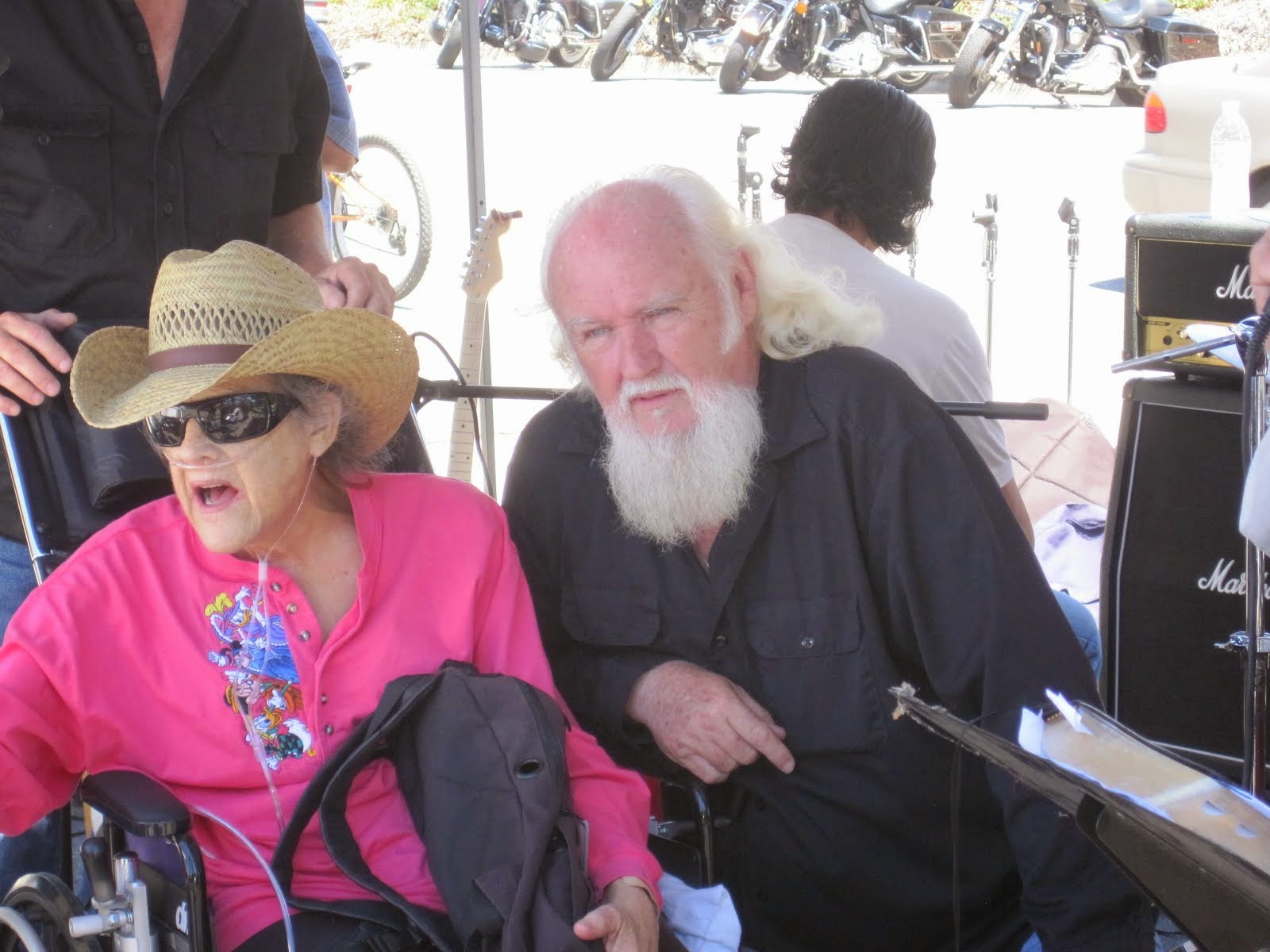OFF THE WIRE
The Press Democrat - 8/18/2016
Aug. 12--A California gang member database administered in part by the Sonoma County Sheriff's Office contains inaccuracies that reduce its effectiveness as a law enforcement tool and may violate privacy rights, a report from the state auditor said Thursday.
The state's two-decade old "CalGang Criminal Intelligence System" is hampered by a weak leadership structure that can't ensure information is correct and may contain names of people who do not meet the criteria for entry in the system, the report from State Auditor Elaine Howle said.
CalGang allows law enforcement agencies around the state to share intelligence and assist each other with investigative leads.
In total, more than 150,000 individuals had records in the CalGang system as of November 2015. Of them, more than 64,000 were entered by agencies in Los Angeles County alone.
Sonoma County had 1,965 people in the database. Of those, 68 percent were listed as gang members and 32 percent were affiliates.
The 109-page report concludes the Legislature must shift oversight of the database to the state Department of Justice and establish standards including supervisory and periodic records reviews.
CalGang was audited to see how law enforcement agencies have implemented requirements for adding minors to its database.
State officials focused on four agencies: the Sonoma and Santa Clara county sheriff's offices and the Los Angeles and Santa Ana police departments. Sonoma County was chosen because it provides systems administration for 30 Northern California counties.
The report called out Sonoma County Sheriff Steve Freitas' office as "not accepting a fair and honest critique" of its current processes. It said Sonoma County officials threatened to leave the system and may not be suited for being the "node administrator," or linchpin for network processes.
Part of the criticism was directed at a process in which the sergeant in charge, telecommunications bureau manager Dennis Smiley, entered 95 percent of the data himself and audited his own work, setting up a conflict and breach in the oversight framework.
Freitas' spokesman, Sgt. Spencer Crum, said while the office disagreed with some findings it accepts the overall conclusions and the recommendation to pass responsibility for the system to the Department of Justice.
"We are currently evaluating the implications of the report before we take any further action," Crum said. "There have been no incidents where the Sheriff's Office has disseminated personal information improperly. We take privacy matters very seriously."
Crum said a person could be placed in the database for a number of reasons including being observed participating in gang activity, admitting they were in a gang, wearing gang attire or colors, having gang tattoos or hanging out with known gang members.
Sonoma County stopped putting minors in the database in 2014, Crum said.
Richard Coshnear, a local immigration attorney who runs an advocacy group for undocumented immigrants, said he first became aware of problems with the CalGang database about 10 years ago, when the county's multiagency gang task force was cooperating with federal immigration officials identifying undocumented immigrants involved in gangs.
Coshnear said youth were being entered into the database with inadequate criteria, such as being seen with a known gang member and living in a gang-plagued community.
"We concluded that if your older brother was a gang member and you walked down to the local 7-Eleven in a gang neighborhood, you would meet the criteria," he said, "even though you had nothing to do with a gang."
The report said in numerous instances agencies could not substantiate entries they had made, noting some deficiencies may have been caused by other entities adding information to the database.
In one example, it said 42 individuals were listed in CalGang who were supposedly 1 year old at the time of entry. Twenty-eight of those people were entered for "admitting to being gang members," the report said.
Also, it said hundreds of people were kept in the database well beyond the five-year purge date. Others had purge dates mistakenly set more than 100 years in the future, the report said.
The report also found agencies did not implement a law requiring them to notify parents when a minor is listed in the database. Because of that, family members did not have a chance to challenge the listings, the report said.
"As a result, user agencies are tracking some people in CalGang without adequate justification, potentially violating their privacy rights," Howle wrote in a letter to Gov. Jerry Brown and lawmakers. "Further, by not reviewing information as required, CalGang's governance and user agencies have diminished the system's crime-fighting value."
In its 2011 gang threat assessment, the FBI attributed 48 percent of all violent crimes to gang members. Membership in gangs increased 40 percent nationally between 2009 and 2011, the state Attorney General said in a 2014 report.
Francisco Vazquez, a Sonoma State University professor who served as a member of the Sonoma County Community and Local Law Enforcement Task Force, welcomed the auditor's findings and stressed the importance of having accurate and credible information in the CalGang database. The lives and livelihoods of young people depend on it, he said.
Vazquez said the lack of oversight runs the danger of creating a highly discriminatory law enforcement system that is "grossly unjust," one creating a "pipeline" for Mexican youth into the prison system.
Coshnear said the data in the CalGang database is not purged as often as it should be. He cited the case of one of his clients, an undocumented immigrant applying for a temporary deportation relief under President Obama's deferred action for childhood arrivals program, or DACA.
Coshnear said his client's DACA application is being held up because of an incident 11 years ago when he was in high school and involved in a gang-related fight.
"He's had no affiliation with gangs for last 11 years," said Coshnear. "He's a father of two U.S. citizens, a sales manager at a retail store and he has not been able to get DACA."
Coshnear said law enforcement's shotgun approach where people are labeled gang members by mere association is troublesome and damaging.
"There are brothers of gang members who are in medical school," he said. "Brothers and sisters are completely different people."
You can reach Staff Writer Paul Payne at 568-5312 or paul.payne@pressdemocrat.com. On Twitter @ppayne. You can reach Staff Writer Martin Espinoza at 521-5213 or martin.espinoza@pressdemocrat.com.
___
(c)2016 The Press Democrat (Santa Rosa, Calif.)
Visit The Press Democrat (Santa Rosa, Calif.) at www.pressdemocrat.com
Distributed by Tribune Content Agency, LLC.
skip to main |
skip to sidebar




Bill & Annie

Art Hall & Rusty


NUFF SAID.......


































































OOHRAH

ONCE A MARINE,ALWAYS A MARINE

GIVING BACK


MOUNT SOLEDAD














BIKINI BIKE WASH AT SWEETWATER










FRIENDS





BILL,WILLIE G, PHILIP










GOOD FRIENDS


hanging out

brothers


GOOD FRIENDS

Good Friends

Hanging Out




Bill & Annie
Art Hall & Rusty
Art Hall & Rusty


NUFF SAID.......



















NUFF SAID......



























Mount Soledad




BALBOA NAVAL HOSPITAL
RUSTY DANNY

ANNIE KO PHILIP

PHILIP & ANNIE

OUT & ABOUT

OOHRAH...

OOHRAH
ONCE A MARINE,ALWAYS A MARINE

ONCE A MARINE,ALWAYS A MARINE
American Soldier Network GIVING BACK

GIVING BACK
CATHY & BILL
PHILIP & DANNY & BILL

MOUNT SOLEDAD
bills today
EMILIO & PHILIP
WATER & POWER
WATER & POWER
bootride2013



BIKINI BIKE WASH AT SWEETWATER







ILLUSION OPEN HOUSE

FRIENDS


GOOD FRIENDS



BILL,WILLIE G, PHILIP









GOOD FRIENDS

GOOD FRIENDS
Friends
- http://www.ehlinelaw.com/losangeles-motorcycleaccidentattorneys/
- Scotty westcoast-tbars.com
- Ashby C. Sorensen
- americansoldiernetwork.org
- blogtalkradio.com/hermis-live
- davidlabrava.com
- emiliorivera.com/
- http://kandymankustompaint.com
- http://pipelinept.com/
- http://womenmotorcyclist.com
- http://www.ehlinelaw.com
- https://ammo.com/
- SAN DIEGO CUSTOMS
- www.biggshd.com
- www.bighousecrew.net
- www.bikersinformationguide.com
- www.boltofca.org
- www.boltusa.org
- www.espinozasleather.com
- www.illusionmotorcycles.com
- www.kennedyscollateral.com
- www.kennedyscustomcycles.com
- www.listerinsurance.com
- www.sweetwaterharley.com

Hanging out

hanging out
Good Friends

brothers
GOOD FRIENDS

EMILIO & SCREWDRIVER

GOOD FRIENDS
Danny Trejo & Screwdriver

Good Friends
Navigation
Welcome to Bikers of America, Know Your Rights!
“THE BIKERS OF AMERICA, THE PHIL and BILL SHOW”,
A HARDCORE BIKER RIGHTS SHOW THAT HITS LIKE A BORED AND STROKED BIG TWIN!
ON LIVE TUESDAY'S & THURDAY'S AT 6 PM P.S.T.
9 PM E.S.T.
CATCH LIVE AND ARCHIVED SHOWS
FREE OF CHARGE AT...
BlogTalkRadio.com/BikersOfAmerica.
Two ways to listen on Tuesday & Thursday
1. Call in number - (347) 826-7753 ...
Listen live right from your phone!
2. Stream us live on your computer: http://www.blogtalkradio.com/bikersofamerica.
A HARDCORE BIKER RIGHTS SHOW THAT HITS LIKE A BORED AND STROKED BIG TWIN!
ON LIVE TUESDAY'S & THURDAY'S AT 6 PM P.S.T.
9 PM E.S.T.
CATCH LIVE AND ARCHIVED SHOWS
FREE OF CHARGE AT...
BlogTalkRadio.com/BikersOfAmerica.
Two ways to listen on Tuesday & Thursday
1. Call in number - (347) 826-7753 ...
Listen live right from your phone!
2. Stream us live on your computer: http://www.blogtalkradio.com/bikersofamerica.
Good Times
Hanging Out

Key Words
- about (3)
- contact (1)
- TENNESSEE AND THUNDER ON THE MOUNTAIN (1)
- thinking (1)
- upcoming shows (2)
Blog Archive
-
▼
2016
(810)
-
▼
August
(59)
- Motorcycle clubs fight to keep their trademark ‘co...
- BABE OF THE DAY
- BABE OF THE DAY
- BABE OF THE DAY
- BABE OF THE DAY
- BABE OF THE DAY
- Lane Splitting: Educational Guidelines Legislation...
- babe of the day
- You may be in California’s gang database and not e...
- Motorcycle Clubs Still Legal, REPEATED BY REQUEST...
- 2015 National Gang Report - Outlaw Motorcycle Clubs
- babe of the day
- BABE OF THE DAY
- Bill to Create Guidelines on Lane Splitting is Sig...
- BABE OF THE DAY
- Bill to shed light on California’s gang database m...
- Statistics Prove Outlaw Motorcycle Clubs Not A Pub...
- Motorcycle lane splitting is officially legal in C...
- BABE OF THE DAY
- BABE OF THE DAY
- **PRIVACY NOTICE:
- BABE OF THE DAY
- CALIFORNIA - AB-51 HAS BEEN SIGNED BY GOVERNOR BROWN
- CALIFORNIA - AB-51 HAS BEEN SIGNED BY GOVERNOR BROWN
- BABE OF THE DAY
- “Motorcycle Enforcement Operations” or Discriminat...
- Lane splitting is officially legal in California
- EPA Slaps Harley-Davidson with $12 Million Fine
- TRANSPORTING A FIREARM WITH A LOADED MAGAZINE WHIL...
- Lane Splitting: Educational Guidelines Legislation...
- CALIFORNIA - State slams Sonoma County Sheriff's g...
- BABE OF THE DAY..
- California Gang Database
- What The World’s Deadliest Bullet Does To A Cement...
- BABE OF THE DAY
- The CalGang Criminal Intelligence System
- BABE OF THE DAY
- BABE OF THE DAY
- BABE OF THE DAY
- BABE OF THE DAY
- BABE OF THE DAY
- Outlaw Motorcycle Clubs Peacefully Assemble
- BABE OF THE DAY
- BABE OF THE DAY
- BABE OF THE DAY
- BABE OF THE DAY
- BABE OF THE DAY
- BABE OF THE WEEK - Patrizia
- BABE OF THE DAY
- BABE OF THE DAY
- BABE OF THE DAY
- BABE OF THE DAY - Atina
- From the Motorcycle Riders Foundation - August 2, ...
- BABE OF THE DAY
- BABE OF THE DAY
- Ten Most Notorious Outlaw Biker Gangs...............
- BABE OF THE DAY
- CA - Rside Family and Friends, Summer Bash
- BABE OF THE WEEK - Sabrina
-
▼
August
(59)
Bikers of America, Know Your Rights!... Brought to you by Phil and Bill
Philip, a.k.a Screwdriver, is a proud member of Bikers of Lesser Tolerance, and the Left Coast Rep
of B.A.D (Bikers Against Discrimination) along with Bill is a biker rights activist and also a B.A.D Rep, as well, owner of Kennedy's Custom Cycles
